#there are too many acronyms and number combinations in this trade
Explore tagged Tumblr posts
Text
my brain is leaking out of my ears fam, these last two and a half weeks of school are going to be ROUGH
#kee speaks#there are too many acronyms and number combinations in this trade#this past week has just been codes and the absolutely RIVETING topic of metallurgy#sarcasm cause half the class fell asleep during the metallurgy module today#and I'm not convinced the teacher that does that class actually knows what he's talking about#thank fuck we only have him once a week cause he just. reads the power point slides and can't hear for shit and if someone asks a question#it's usually another classmate who is able to answer the question better#and then fucking CODES. Cause Canada can't make anything easy and has got to make their own designations for codes#But instead of making their own they just adopt the industry standard made by the american based organizations and slap their own onto it#So this entire book is a word search of trying to find the associating codes between the American system and Canadian system#so like the Americans made ASME section IX for pressure vessels and all that shit but then Canada had to make the CSA#and just like. swiped some of the specifications of the code and slapped their own label on it as CSA B51 and it's all the same#but we have to know both the ASME and CSA designations of all this stuff#so I'm like trying to go through and find ok this particular thing is labelled as CSA W59 and this is CWB W47.1 and#then gotta find the associated ASME code that goes along with it because of course they gotta jumble it up and not put it together#This is all driving me up the WALL there is so much information#Thsi page I have open in front of me has like API SPec 12F and then B31.1 and CSA W47.1 and CSA W117.2 and Z662 and TC 44#I don't even know what the fuck TC stands for I have yet to delve into that#And I think most of those are CWB designations so that's not even including the bazillion ASME specifications which half of them#are broken down even further into divisions so it'll be like ASME section IX div V or some shit like that#😵😵😵😵#I was quite proud of myself yesterday because the teacher just did a quick review verbal test where he threw us questions and anyone could#pipe in with the answer and he asked what the specific associated CSA code for an ASME sect was and usually there's like four guys#that immediately answer and nobody did and I knew what it was and was able to chime in#that's the first time I've been able to chime in without several other people also answering so that felt good#but now I'm just sitting here like someone please just take me out there is no way I can make this all stick in my head#i find it helps to rewrite stuff into my notebook to help the information stick in my head but it took me five minutes to realize#that the acronym and the spelling out of the organization name of said acronym did not match at all#like the acronym was AISI and I wrote 'American National Standards Institute' next to it which does not match at all#well tbf the first and last letters match but the I and S should've been 'Iron & Steel'
2 notes
·
View notes
Text
Mastering VWAP for AUDCAD: Ninja Tactics to Outsmart the Market What’s VWAP Got to Do with AUDCAD? Everything Imagine trading without a clear sense of whether you’re paying too much or selling too low. That’s like buying a fancy cup of coffee only to realize it’s instant. Enter VWAP (Volume-Weighted Average Price), a game-changing tool that blends price and volume to give you a realistic benchmark. And when paired with the AUDCAD currency pair, VWAP becomes a ninja-level tool for precise trading. In this article, we’ll explore the hidden strategies, pitfalls, and insider secrets of using VWAP for AUDCAD trades. Spoiler alert: It’s a mix of advanced techniques, a touch of humor, and insights that’ll make you feel like a Forex Jedi. The VWAP Whisperer: Decoding the Basics VWAP isn’t just another acronym to memorize; it’s your trading compass. Calculated by dividing the total dollar value traded by the total volume traded, VWAP helps identify average prices over a given period. Why VWAP Matters for AUDCAD: VWAP matters for several reasons. First, it offers a pulse check for the AUDCAD’s often volatile trends. Second, it provides strategic timing for entry and exit points. Finally, it reveals institutional-level moves that can align your strategy with larger market forces. For example, during the Sydney or Toronto sessions, VWAP highlights when AUDCAD is overbought or undersold relative to its weighted average price. This knowledge can save you from impulsive trades. Underground Secrets for VWAP + AUDCAD Success The VWAP Bounce: When Price Meets Opportunity Picture this: AUDCAD touches the VWAP line, bounces like a basketball, and continues its trajectory. This “bounce” is a high-probability trade setup. Pair VWAP with a stochastic oscillator for confirmation—if stochastic confirms oversold conditions, you’ve got a recipe for success. Intraday Trends: The Forgotten Treasure Many traders only glance at daily trends, but VWAP shines brightest intraday. Use it to confirm whether mid-session AUDCAD reversals are genuine or fleeting. The Stealthy Scalper’s Secret For scalpers, VWAP offers GPS-level precision. Focus on micro-reversions to VWAP within 5-minute candles during high-volume periods. Missing a VWAP scalping setup is like skipping dessert after dinner—survivable but regretful. Myths, Busted: The VWAP Edition Myth 1: VWAP Is Only for Stocks False. VWAP originated in stocks but thrives in Forex, especially high-volume pairs like AUDCAD. Myth 2: VWAP = Guaranteed Profits VWAP is a tool, not a crystal ball. Combine it with risk management and complementary indicators. Myth 3: VWAP Doesn’t Work in Trending Markets Wrong. In trending AUDCAD markets, VWAP acts as a dynamic support or resistance line. Case Study: VWAP in Action with AUDCAD Let’s revisit an AUDCAD scenario during an RBA announcement. Prices spiked 50 pips above VWAP. Many traders jumped in prematurely, but savvy traders waited for VWAP convergence, entering short as the price reverted. Key Takeaway: VWAP is your sanity check in volatile news-driven markets. Elite Tactics for VWAP + AUDCAD Mastery - Dual VWAP Strategy: Use two VWAP lines—one intraday, one weekly—and watch for convergence. - Time-Sensitive Adjustments: Adjust VWAP during Sydney-London overlaps to capture session flows. - The Volume Filter: Ignore VWAP during low-volume periods to avoid false signals. Ready to Level Up? The secrets here are just the beginning. Explore our advanced tools and insights: - Stay Ahead with Real-Time News: Forex News Today - Sharpen Your Skills: Free Forex Courses - Join the Elite Community: StarseedFX Membership Trade Smart, Laugh Often Trading isn’t just about numbers; it’s about mindset. Use VWAP as your guiding light and AUDCAD as your playground for precision. And remember, every mistake is a step toward mastery—unless it’s hitting ‘sell’ instead of ‘buy.’ That’s just cruel irony. —————– Image Credits: Cover image at the top is AI-generated Read the full article
0 notes
Text
Passwords
001 Many sites on the internet require passwords. Although they seem a nuisance, they protect you. Consider them like a key to a door.
002 Why bother with passwords?
(i) Financial Management
For most people this means online banking. If you use a weak password it is likely it will eventually get hacked. Needless to say this could result in you losing money.
(ii) Auction Sites
If someone hacked your account they could make binding bids or buy things in your name.
(iii) Stock Trading
This is like (i) plus (ii). Someone could buy or sell stock or have stock transferred.
(iv) Social Media
Hacked social media accounts can be used to post compromising messages that could embarrass or defame somebody, be used for harassment, or to build up a picture of who you are and everyone you know. This could result in a visit from the police. Social media is also very useful for hackers for enabling identity theft.
(v) Shops
Hacking one of your shopping accounts (e.g. Amazon) would only be an issue if you have a “stored” payment method such as credit card details.
If you discover that your payment information was used to ship unexpected goods to an unknown location, it’s clear that someone has hacked your account.
(vi) Gambling
A hacker could generate debts on your behalf.
003 How To Design a Good Password
The important things when designing a password (in order) are make it -
(i) Memorable,
(ii) Long – the longer the better (at least 12 characters),
(iii) Complex,
(iv) Different for different sites.
004 The Core of the Password
First of all create a “core” password with a string of letters. Three ways ways of doing this include -
(i) Initial Letters
Open your favourite book. Go to a memorable page e.g. your birthday. Read the first sentence. For me this would be “The Age of Reason” by Sartre. My birthday is on the 23rd. The first sentence of the first paragraph on page 23 is “Boris bitterly regretted never having been there, he would certainly go if it reopened.”
This makes bbrnhbthwcgiir – 14 characters. If I forget it I just have to go to my favourite book.
(ii) Relevant but Not Guessable Words
This could be a street name, hill names, school name, stream name(s), car. Don’t use words relevant to you or close family. However, you could use a relative’s street name etc. Hill or mountain names, especially if non-English, are good. Similarly, the name of your school is bad because a hacker could probably get it from Facebook. So use a relative’s school instead. The advice regarding streams/rivers is the same as for hills/mountains. If the resulting password is too short add something relevant.
So, examples from these could be -
springwoodbank (where my parents-in-law lived)
anteallach (a Scottish mmountain)
bluemountainsgrammar (a school in Australia)
severnriver (a river far away)
deloreanbelfast (not my car!)
or -
Look out of the window - flowerwheelbarrowbinhusband
Look at your wall - picturetelevisionblue
Look at your spouse - greynoseartist
(iii) A Silly Phrase
Examples could be -
weneedanewcomputer
mustremembermilk
quickbrowndogs
lillylikeschocolate
myneighbourisnoisy
dollypartonhasbigboobies
These are long and memorable.
005 Make The Password More Secure
The core password generated as above satisfies the first two criteria – long and memorable. You could use it as it is. However, to make it even better we can add complexity. There are three easy ways of doing it – add special characters and/or numbers and use mixed case. But where to put the number and special characters? The easiest is between each word (ignoring example (iii) above) but the better way would be to place it in random places. The downside here is that random places make it less memorable.
(i) Special characters such as !, £, $, _
flower_wheelbarrowbinhusband
bbrnh£bthwcgiir
springwood!bank
we_need£a$new_computer
Bear in mind that some sites only allow certain special characters.
(ii) Numbers
The question here is how to decide what numbers to use. Anything relevant to you or your close family is bad because it is available online from various sources (e.g. Facebook, Linkedin, Ancestry). Of course 123456 is bad. You could use something random but then it won’t be so easily memorable. Ignoring close family, you could use the birth date of, say, your mother (or even better, your grandmother). For me that would be 07071936. You could use one or more of these numbers -
flower07wheelbarrow07bin19husband35
bb07rnhb07thw19cgiir35
07spring07woodbank1935
w07eneedane07wco19mput35er
(iii) Mix upper and lowercase letters
FlowerwheelbarrowbinhusbanD
bbrnhbthwcGiir
SpringWoodBank
wEnEEdanEwcomputEer
(iv) To make an extremely secure password, use all three complexity methods -
Flower_07wheelbarrow07bin19husbanD35
bb07rnh£b07thw19cGiir35
07Spring07Wood!Bank1935
w_07EnEEd£a$nE07w__co19mput35Er
006 Create Different Passwords For Different Websites
You could use the same password for each website but if that gets hacked it would mean the hacker would have access to all of your accounts online. So, how to make it unique for each website? Here are some suggestions.
(i) Add the name of the site to your password
Flower_07wheelbarrow07bin19husbanD35amazon
bb07rnh£b07thw19cGiir35ebay
07Spring07Wood!Bank1935twitter
w_07EnEEd£a$nE07w__co19mput35Erfineartamerica
(ii) Add an acronym relevant to the site
Flower_07wheelbarrow07bin19husbanD35azn
bb07rnh£b07thw19cGiir35eb
07Spring07Wood!Bank1935twt
w_07EnEEd£a$nE07w__co19mput35Erfaa
(iii) Add numbers
How to choose a number relevant to the site? An easy way is the length of the name of the site -
Amazon = 6
Ebay = 4
Twitter = 7
Fineartamerica = 14
To make it harder for the hacker “pad” it to three digits; -
Amazon = 006
Ebay = 004
Twitter = 007
Finartamerica = 012
So we get -
Flower_07wheelbarrow07bin19husbanD35006
bb07rnh£b07thw19cGiir35004
07Spring07Wood!Bank1935007
w_07EnEEd£a$nE07w__co19mput35Er012
007 Storing Passwords
Generally speaking, storing passwords anywhere is a bad idea but if you really can’t remember your passwords, here is some advice.
(i) Write Them Down
Writing your passwords on a piece of paper and sticking it to your screen or under your keyboard is a bad idea.
So find that favourite book again and your favourite page and slip your password note in there. What happens if a burgler finds it? Burglars rarely, if ever, are interested in passwords – they are looking for cash or small high value items to sell on quickly.
If you have accepted the advice above you have a core password used for all sites. For each site you have added a three-digit number at the end. This means all you have to do is store your core password because you can work out which password to use for each site but others would have a hard time figuring it out.
For example, instead of storing
Flower_07wheelbarrow07bin19husbanD35006
use
Flower_07wheelbarrow07bin19husbanD35
Even if a burglar/hacker tries to use the password it will not work anywhere.
(ii) Password Manager
A password manager is a computer program that allows users to store, generate and manage their passwords for local applications and online services.
Types of password managers include:
locally installed software applications
online services accessed through website portals
locally accessed hardware devices that serve as keys
Password managers typically require a user to generate and remember a master password to unlock the password manager. Many password managers offer additional services such as storage of credit card and frequent flier information.
Password managers come and go but the popular ones in 2021 are LastPass, myki, LogmeOnce, Norton and bitwarden
The two downsides of using a password manager are that you usually have to pay for it and, of course, if the password manager gets hacked your passwords are exposed.
(iii) Security Key
A security key looks a bit like a USB pen. It allows you to securely log into your accounts without having to key in passwords. They usually just plug into a USB port.
There are various security keys available so its worth shopping around and comparing them. For example scan.co.uk sells the Hypersecu FIDO Titanium Pro (works in Windows, Apple devices and Android) which currently does well in reviews.
In addition to managing passwords a security key can combat real-time attacks such as man-in-the-middle (MITM), prevent phishing, make keylogging impossible and protect PINs from brute force attacks.
The problem is that they can be difficult to set up.
008 How To get Hacked (Bad Security Online)
(i) Use Number Substitutions in Passwords
Common substitutions are -
a = @
s = $
o = 0
e = 3
i /l = 1
So, ”myamazonassword” becomes “my@m@z0nA$$w0rd”
Hackers are aware of this so number substitution is a bad idea.
Note – this is substitution not addition (discussed above).
(ii) Use Personal Information in Passwords
Examples are -
Your birthday,
Close family names (sons, daughters),
Pet name,
Your address.
(iii) Repeating Characters in Passwords
1234567
aaaaaaaaa
abcdefg
abcabcabc
(iv) Same Password for All Sites
Someone who culls your Facebook or Twitter password in a phishing exploit could, for example, access your bank account. Reusing passwords for email, banking, and social media accounts can lead to identity theft. Two recent breaches revealed a password reuse rate of 31% among victims.
(v) Auto Sign In
Do not allow your computer to automatically sign into sites on boot-up
(vi) “remember me”, Automatic sign-in option
Do not use “remember me” or Automatic sign-in option which is available on some web sites.
(vii) Alien Computers
Do not enter passwords on a computer you don’t control, such as a friend’s computer, because you don’t know what spyware or keyloggers might be on that machine.
(viii) Open WiFi
Do not access password-protected accounts over open WiFi networks or any other network you don’t trust unless the site is secured via HTTPS. Use a Virtual Private Network (VPN) if you travel a lot.
(ix) Keyboard Combinations in Passwords
Avoid consecutive keyboard combinations such as qwerty or asdfg.
(x) Security Questions
The names of spouses, kids, other relatives, or pets, can be deduced with a little research. When you click the “forgot password” link within a webmail service or other site you are often asked to answer a question or series of questions. The answers can often be found on your social media profile. This is how Sarah Palin’s Yahoo account was hacked.
(xi) Social engineering
This is an elaborate type of lying. An alternative to traditional hacking, it is the act of manipulating others into performing certain actions or divulging confidential information.
1 note
·
View note
Text
How to Decide on a Business Name: Tools, Tips, and Strategies
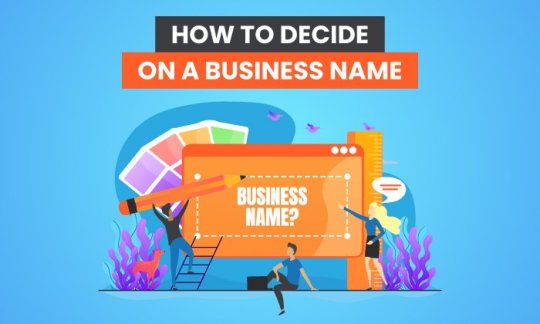
There are dozens of considerations entrepreneurs have to keep in mind when launching a new company, from the logo to the product to the packaging. The business name, however, may be the most important of all.
There are over 30 million small businesses in the U.S., according to the U.S Small Business Administration. That means you have to go above and beyond to stand out. The right name can help you do just that.
If you’re stuck on what to call your business or just want to make sure your chosen name ticks all the right boxes, I’m here to help.
In this article, I’ll cover my top tips for picking a winning business name, show some examples of what a great business name looks like, and even let you in on a sneaky way to get a load of business name ideas fast.
10 Tips to Pick a Business Name
Your business name can be almost anything you want it to be. As long as it’s legal and isn’t already in use, you’re good to go. However, there are several best practices most legal and marketing experts agree on.
I recommend the following tips to make sure your business gets off to the best start possible.
1. Ensure the Business Name Is Not Copyrighted or Trademarked
The first step in picking a business name is to make sure it doesn’t infringe any copyrights or trademarks. You can search copyright records and trademark records online.
I’d recommend going one step further and make sure it’s possible to trademark your brand name. You never know what the future will bring, after all. Even if you plan to keep your business small, I strongly recommend making sure it’s possible to copyright and trademark your brand.
Not doing so could land you in hot water years down the line. Just look at Apple. When Steve Jobs started the company, he chose Apple’s name because he was a fan of the Beatles (their recording label was called Apple Records).
There wasn’t any conflict initially because the two companies operated in completely separated industries. That was until Apple launched the iPod and the iTunes store, however. When they started operating in the same industry, Jobs quickly found himself saddled with a lawsuit.
2. Ensure the Business Name Isn’t Already Taken
This is a no-brainer, but it’s important to mention. Ideally, your business name will be unique and not used by any other business in existence. At the very least, it shouldn’t be used in any way by other companies operating in your industry.
A quick Google search can help you out here. If any results or domains come up that suggest another company is already using your name, either as a business name or as the name of one of their products, then it’s time to go back to the drawing board.
3. Ensure the Business Name Is Descriptive
You want customers to have an idea of what your business does just by hearing your name. You don’t have to know anything about TripAdvisor to know it is in the travel industry or that Burger King sells burgers.
Don’t be so descriptive that your name is downright boring, however. Seattle Plumber Inc. isn’t exactly inspiring and doesn’t separate your brand from any other plumbers in the city. First Call Plumbing is much catchier and easier to remember.
4. Make Sure the Matching Domain Name Is Available
Coming up with a brilliant business name is just the start. Before you can commit to it completely, make sure a matching domain name is available.
If it is, buy it .
If not, consider coming up with another business name. Having a domain name that is the exact match of your brand can be a real boost, particularly when it comes to SEO .
If your heart is set on a specific name, then all is not lost. There are several strategies you can use if your domain name is unavailable . Adding extra words or extending the name of your brand in your URL is becoming increasingly common.
5. Get Creative
This is your chance to embrace your inner copywriter and let your imagination and creativity run wild. Don’t be afraid to make something up. Almost three-quarters (72 percent) of the best brand names use made-up words or acronyms.
There are a couple of reasons for that. Firstly, existing words already mean something to many of your potential customers. You’ll need to decide whether this is a good or bad thing. Second, competitors may well be using the same or similar words.
6. Don’t Choose a Business Name That Is Hard to Pronounce or Spell
You’ll want your brand name to be accessible for everyone. That means no words that are impossible to pronounce when written down or easy to misspell.
While mixing up the letters or removing vowels from common words may look cool, it doesn’t help your customers find your business online. If customers can’t easily search for your business after hearing your name phonetically, there’s a good chance you’ll miss out on leads. You’ll also spend a lot of time spelling out your URL for customers.
7. Complete a Secretary of State Search
One way to make sure your business name is different from everyone else operating in your area is to complete a Secretary of State Search. Most states have a way to do this easily online, so it’s simply a matter of visiting your state’s website and typing in your proposed name.
If in doubt, ask your attorney for help. I’d also recommend searching in Delaware , even if you don’t live in that state. Delaware is a haven for company registrations, and so searching there helps ensure no businesses anywhere else in the country have similar names.
8. Get Feedback on the Business Name Before Making It Official
Test your business name out on your friends and family and get their feedback before committing to it. While you may think you’ve looked at your name from every angle, there’s a chance you’ve missed something.
If you’re not sure about a business name yet, give people a shortlist of your ideas and ask them to pick their favorite. If everyone agrees on the same one, you may just have found your new name.
9. Choose a Business Name That Isn’t Accidentally Offensive
Make sure your business name doesn’t mean something offensive in another language or as a slang term.
No self-respecting business owner would want to insult potential customers. Yet dozens of businesses do this without knowing it because of their business name.
Just because your business name isn’t offensive in your own country doesn’t mean it’s inoffensive everywhere. Any language or cultural issues can spell bad news for companies wanting to expand abroad.
Luckily, it’s never been easier to check whether your business name is offensive or not. Just head over to WordSafety.com and enter your proposed name. The site will quickly find whether there are any potential issues.
10. Keep It Simple and Easy to Remember
Long, complicated business names are bad news. The shorter, catchier, and more memorable your name is, the better. Try to keep it under 20 characters for the sake of your URL and avoid combining more than three different words.
Examples of Great Business Names
Tips and guidelines aren’t always enough to get the creative juices flowing. That’s why I’ve compiled five examples of great business names below, along with a description of what makes them so good.
Hopefully, these will give you a jumping-off point.
Google
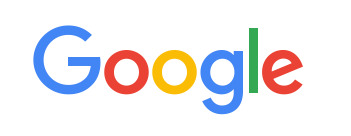
In a parallel universe, someone is currently searching for something on BackRub. That’s the name Google was initially called because of the backlinks it used to rank websites. Eventually, they settled on Googol, a mathematical term for a number with a million zeros in it. The final brand name of Google was the result of a spelling error by an employee.
In the end, it worked out brilliantly. The name is catchy, creative, and random. “Google” is also easier to spell, remember and pronounce than Googol too.
Whole Foods Market
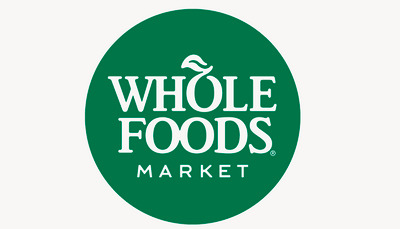
Whole Foods Market is the most descriptive name on this list, and that is part of the reason it’s so effective. It sends subtle signals that attract the brand’s target audience .
Choosing the word market rather than grocer or store was a stroke of genius in this regard. Market conjures up images of farmer’s markets and suggests the kind of well-off consumer Whole Foods’ targets.
Lego
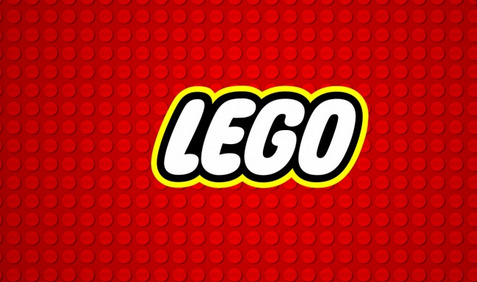
Lego is a simplified portmanteau of the Danish words leg godt meaning “play well.” Brilliantly, Lego also means “I put together,” so the name works on two levels.
Not only is the name descriptive for the native Danish market, but it also sounds great in other languages and doesn’t have any additional meanings.
Pepsi
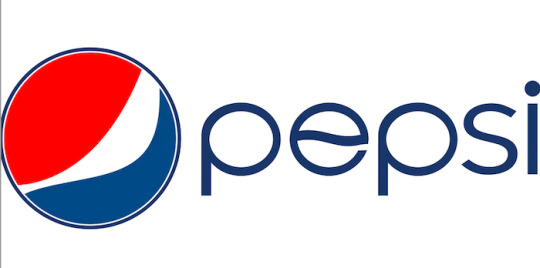
Caleb Davis Bradham, the inventor of Pepsi, originally called his concoction Brad’s Drink. Thankfully, he rebranded three years later . Pepsi is derived from the word dyspepsia, which means indigestion as Bradham believed the drink aided digestion.
Pepsi is way more creative and memorable than Brad’s Drink. Perhaps most importantly, the new name in no way infringed on Coca-Cola, created just a handful of years earlier.
Verizon
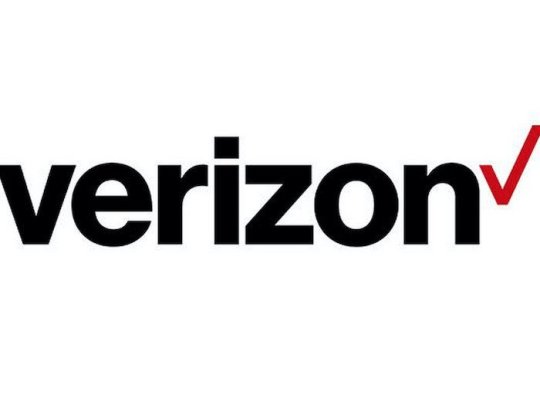
Verizon was formed in 2000 by the merger of Bell Atlantic and GTE. The business name combines the Latin word for truth, veritas, and horizon to signify the new company’s honest and forward-thinking nature. It’s creative, it has meaning, and it’s definitely memorable!
Use a Business Name Generator to Find Your Perfect Name
If you’re still stuck, help is at hand in the form of business name generators. There are plenty of software tools to help entrepreneurs quickly brainstorm business names.
Here are some to try:
Shopify
Shopify is famous for helping small business owners thrive. Coming up with a brand name is no different. Enter a keyword into the search bar, and Shopify will instantly spit out 100 business names you can create a store from today.
Freshbooks
Bookkeeping software Freshbooks has a pretty comprehensive business name generator that tailors recommendations based on your industry.
Start your search by choosing whether you operate in creative and marketing, legal or business services, trade, and home services, or IT. Enter a keyword, and Freshbooks will serve up three suggestions. You can ask for more suggestions or change your keyword to get a different batch of names.
Namelix
Namelix is a free AI-powered business name generator. Enter one or several keywords to get started, then filter suggestions by name, length, and style. There are hundreds of names to scroll through and a mix of basic and premium names. Premium recommendations come with a logo and domain name attached to make building a brand easier.
Conclusion
The right name can impact your SEO, branding, and customer perception . Would Google be where it is now if it was called Backrub? I don’t think so.
The business landscape is becoming more competitive every day, and a great business name can help your brand stand out.
Take inspiration from some of the great business names already out there, and use a business name generator if necessary. Just make sure your business name sets you up for long-term growth.
What are you going to call your new business? Let me know in the comments!

See How My Agency Can Drive Massive Amounts of Traffic to Your Website
SEO – unlock massive amounts of SEO traffic. See real results.
Content Marketing – our team creates epic content that will get shared, get links, and attract traffic.
Paid Media – effective paid strategies with clear ROI.
Book a Call

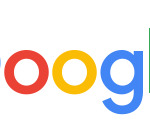


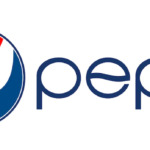


Go to Source Author: Neil Patel
This post How to Decide on a Business Name: Tools, Tips, and Strategies first appeared on WalrusVideo
0 notes
Text
How to Decide on a Business Name: Tools, Tips, and Strategies
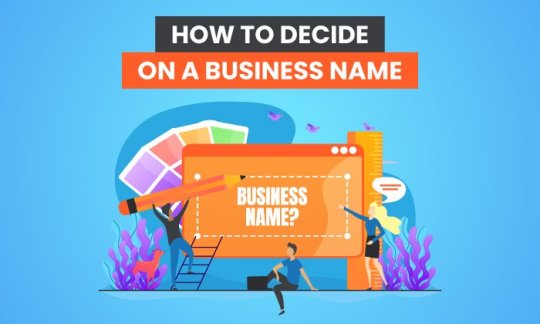
There are dozens of considerations entrepreneurs have to keep in mind when launching a new company, from the logo to the product to the packaging. The business name, however, may be the most important of all.
There are over 30 million small businesses in the U.S., according to the U.S Small Business Administration. That means you have to go above and beyond to stand out. The right name can help you do just that.
If you’re stuck on what to call your business or just want to make sure your chosen name ticks all the right boxes, I’m here to help.
In this article, I’ll cover my top tips for picking a winning business name, show some examples of what a great business name looks like, and even let you in on a sneaky way to get a load of business name ideas fast.
10 Tips to Pick a Business Name
Your business name can be almost anything you want it to be. As long as it’s legal and isn’t already in use, you’re good to go. However, there are several best practices most legal and marketing experts agree on.
I recommend the following tips to make sure your business gets off to the best start possible.
1. Ensure the Business Name Is Not Copyrighted or Trademarked
The first step in picking a business name is to make sure it doesn’t infringe any copyrights or trademarks. You can search copyright records and trademark records online.
I’d recommend going one step further and make sure it’s possible to trademark your brand name. You never know what the future will bring, after all. Even if you plan to keep your business small, I strongly recommend making sure it’s possible to copyright and trademark your brand.
Not doing so could land you in hot water years down the line. Just look at Apple. When Steve Jobs started the company, he chose Apple’s name because he was a fan of the Beatles (their recording label was called Apple Records).
There wasn’t any conflict initially because the two companies operated in completely separated industries. That was until Apple launched the iPod and the iTunes store, however. When they started operating in the same industry, Jobs quickly found himself saddled with a lawsuit.
2. Ensure the Business Name Isn’t Already Taken
This is a no-brainer, but it’s important to mention. Ideally, your business name will be unique and not used by any other business in existence. At the very least, it shouldn’t be used in any way by other companies operating in your industry.
A quick Google search can help you out here. If any results or domains come up that suggest another company is already using your name, either as a business name or as the name of one of their products, then it’s time to go back to the drawing board.
3. Ensure the Business Name Is Descriptive
You want customers to have an idea of what your business does just by hearing your name. You don’t have to know anything about TripAdvisor to know it is in the travel industry or that Burger King sells burgers.
Don’t be so descriptive that your name is downright boring, however. Seattle Plumber Inc. isn’t exactly inspiring and doesn’t separate your brand from any other plumbers in the city. First Call Plumbing is much catchier and easier to remember.
4. Make Sure the Matching Domain Name Is Available
Coming up with a brilliant business name is just the start. Before you can commit to it completely, make sure a matching domain name is available.
If it is, buy it .
If not, consider coming up with another business name. Having a domain name that is the exact match of your brand can be a real boost, particularly when it comes to SEO .
If your heart is set on a specific name, then all is not lost. There are several strategies you can use if your domain name is unavailable . Adding extra words or extending the name of your brand in your URL is becoming increasingly common.
5. Get Creative
This is your chance to embrace your inner copywriter and let your imagination and creativity run wild. Don’t be afraid to make something up. Almost three-quarters (72 percent) of the best brand names use made-up words or acronyms.
There are a couple of reasons for that. Firstly, existing words already mean something to many of your potential customers. You’ll need to decide whether this is a good or bad thing. Second, competitors may well be using the same or similar words.
6. Don’t Choose a Business Name That Is Hard to Pronounce or Spell
You’ll want your brand name to be accessible for everyone. That means no words that are impossible to pronounce when written down or easy to misspell.
While mixing up the letters or removing vowels from common words may look cool, it doesn’t help your customers find your business online. If customers can’t easily search for your business after hearing your name phonetically, there’s a good chance you’ll miss out on leads. You’ll also spend a lot of time spelling out your URL for customers.
7. Complete a Secretary of State Search
One way to make sure your business name is different from everyone else operating in your area is to complete a Secretary of State Search. Most states have a way to do this easily online, so it’s simply a matter of visiting your state’s website and typing in your proposed name.
If in doubt, ask your attorney for help. I’d also recommend searching in Delaware , even if you don’t live in that state. Delaware is a haven for company registrations, and so searching there helps ensure no businesses anywhere else in the country have similar names.
8. Get Feedback on the Business Name Before Making It Official
Test your business name out on your friends and family and get their feedback before committing to it. While you may think you’ve looked at your name from every angle, there’s a chance you’ve missed something.
If you’re not sure about a business name yet, give people a shortlist of your ideas and ask them to pick their favorite. If everyone agrees on the same one, you may just have found your new name.
9. Choose a Business Name That Isn’t Accidentally Offensive
Make sure your business name doesn’t mean something offensive in another language or as a slang term.
No self-respecting business owner would want to insult potential customers. Yet dozens of businesses do this without knowing it because of their business name.
Just because your business name isn’t offensive in your own country doesn’t mean it’s inoffensive everywhere. Any language or cultural issues can spell bad news for companies wanting to expand abroad.
Luckily, it’s never been easier to check whether your business name is offensive or not. Just head over to WordSafety.com and enter your proposed name. The site will quickly find whether there are any potential issues.
10. Keep It Simple and Easy to Remember
Long, complicated business names are bad news. The shorter, catchier, and more memorable your name is, the better. Try to keep it under 20 characters for the sake of your URL and avoid combining more than three different words.
Examples of Great Business Names
Tips and guidelines aren’t always enough to get the creative juices flowing. That’s why I’ve compiled five examples of great business names below, along with a description of what makes them so good.
Hopefully, these will give you a jumping-off point.
Google
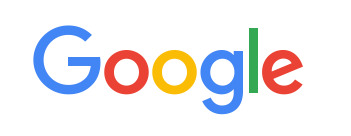
In a parallel universe, someone is currently searching for something on BackRub. That’s the name Google was initially called because of the backlinks it used to rank websites. Eventually, they settled on Googol, a mathematical term for a number with a million zeros in it. The final brand name of Google was the result of a spelling error by an employee.
In the end, it worked out brilliantly. The name is catchy, creative, and random. “Google” is also easier to spell, remember and pronounce than Googol too.
Whole Foods Market
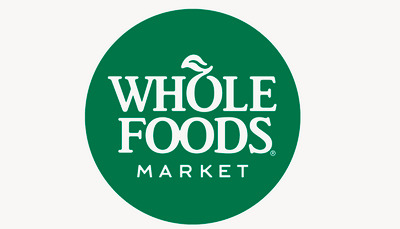
Whole Foods Market is the most descriptive name on this list, and that is part of the reason it’s so effective. It sends subtle signals that attract the brand’s target audience .
Choosing the word market rather than grocer or store was a stroke of genius in this regard. Market conjures up images of farmer’s markets and suggests the kind of well-off consumer Whole Foods’ targets.
Lego
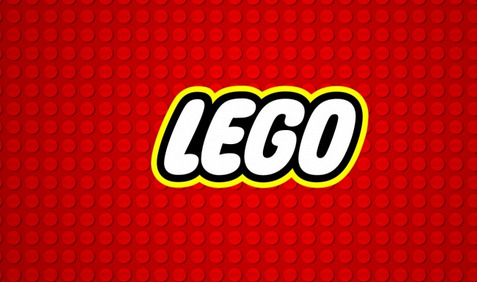
Lego is a simplified portmanteau of the Danish words leg godt meaning “play well.” Brilliantly, Lego also means “I put together,” so the name works on two levels.
Not only is the name descriptive for the native Danish market, but it also sounds great in other languages and doesn’t have any additional meanings.
Pepsi
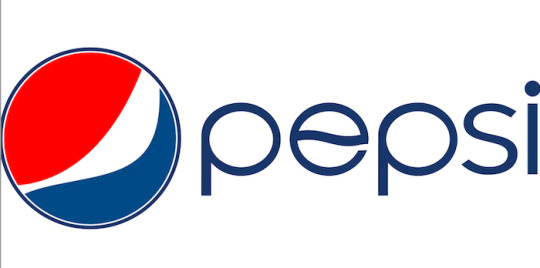
Caleb Davis Bradham, the inventor of Pepsi, originally called his concoction Brad’s Drink. Thankfully, he rebranded three years later . Pepsi is derived from the word dyspepsia, which means indigestion as Bradham believed the drink aided digestion.
Pepsi is way more creative and memorable than Brad’s Drink. Perhaps most importantly, the new name in no way infringed on Coca-Cola, created just a handful of years earlier.
Verizon
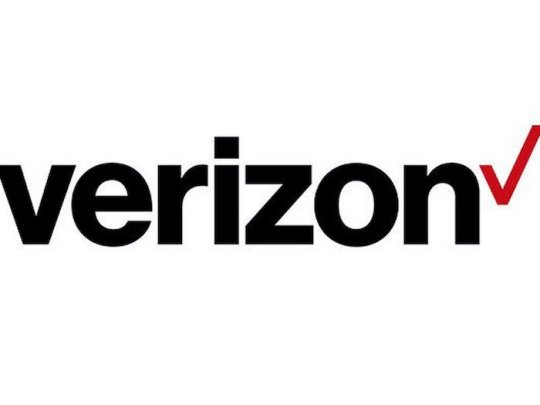
Verizon was formed in 2000 by the merger of Bell Atlantic and GTE. The business name combines the Latin word for truth, veritas, and horizon to signify the new company’s honest and forward-thinking nature. It’s creative, it has meaning, and it’s definitely memorable!
Use a Business Name Generator to Find Your Perfect Name
If you’re still stuck, help is at hand in the form of business name generators. There are plenty of software tools to help entrepreneurs quickly brainstorm business names.
Here are some to try:
Shopify
Shopify is famous for helping small business owners thrive. Coming up with a brand name is no different. Enter a keyword into the search bar, and Shopify will instantly spit out 100 business names you can create a store from today.
Freshbooks
Bookkeeping software Freshbooks has a pretty comprehensive business name generator that tailors recommendations based on your industry.
Start your search by choosing whether you operate in creative and marketing, legal or business services, trade, and home services, or IT. Enter a keyword, and Freshbooks will serve up three suggestions. You can ask for more suggestions or change your keyword to get a different batch of names.
Namelix
Namelix is a free AI-powered business name generator. Enter one or several keywords to get started, then filter suggestions by name, length, and style. There are hundreds of names to scroll through and a mix of basic and premium names. Premium recommendations come with a logo and domain name attached to make building a brand easier.
Conclusion
The right name can impact your SEO, branding, and customer perception . Would Google be where it is now if it was called Backrub? I don’t think so.
The business landscape is becoming more competitive every day, and a great business name can help your brand stand out.
Take inspiration from some of the great business names already out there, and use a business name generator if necessary. Just make sure your business name sets you up for long-term growth.
What are you going to call your new business? Let me know in the comments!

See How My Agency Can Drive Massive Amounts of Traffic to Your Website
SEO – unlock massive amounts of SEO traffic. See real results.
Content Marketing – our team creates epic content that will get shared, get links, and attract traffic.
Paid Media – effective paid strategies with clear ROI.
Book a Call

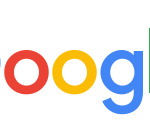


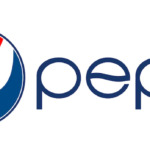


Go to Source Author: Neil Patel
This post How to Decide on a Business Name: Tools, Tips, and Strategies first appeared on WalrusVideo
0 notes
Text
How to Decide on a Business Name: Tools, Tips, and Strategies
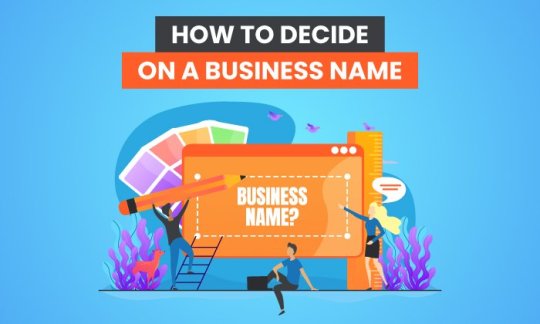
There are dozens of considerations entrepreneurs have to keep in mind when launching a new company, from the logo to the product to the packaging. The business name, however, may be the most important of all.
There are over 30 million small businesses in the U.S., according to the U.S Small Business Administration. That means you have to go above and beyond to stand out. The right name can help you do just that.
If you’re stuck on what to call your business or just want to make sure your chosen name ticks all the right boxes, I’m here to help.
In this article, I’ll cover my top tips for picking a winning business name, show some examples of what a great business name looks like, and even let you in on a sneaky way to get a load of business name ideas fast.
10 Tips to Pick a Business Name
Your business name can be almost anything you want it to be. As long as it’s legal and isn’t already in use, you’re good to go. However, there are several best practices most legal and marketing experts agree on.
I recommend the following tips to make sure your business gets off to the best start possible.
1. Ensure the Business Name Is Not Copyrighted or Trademarked
The first step in picking a business name is to make sure it doesn’t infringe any copyrights or trademarks. You can search copyright records and trademark records online.
I’d recommend going one step further and make sure it’s possible to trademark your brand name. You never know what the future will bring, after all. Even if you plan to keep your business small, I strongly recommend making sure it’s possible to copyright and trademark your brand.
Not doing so could land you in hot water years down the line. Just look at Apple. When Steve Jobs started the company, he chose Apple’s name because he was a fan of the Beatles (their recording label was called Apple Records).
There wasn’t any conflict initially because the two companies operated in completely separated industries. That was until Apple launched the iPod and the iTunes store, however. When they started operating in the same industry, Jobs quickly found himself saddled with a lawsuit.
2. Ensure the Business Name Isn’t Already Taken
This is a no-brainer, but it’s important to mention. Ideally, your business name will be unique and not used by any other business in existence. At the very least, it shouldn’t be used in any way by other companies operating in your industry.
A quick Google search can help you out here. If any results or domains come up that suggest another company is already using your name, either as a business name or as the name of one of their products, then it’s time to go back to the drawing board.
3. Ensure the Business Name Is Descriptive
You want customers to have an idea of what your business does just by hearing your name. You don’t have to know anything about TripAdvisor to know it is in the travel industry or that Burger King sells burgers.
Don’t be so descriptive that your name is downright boring, however. Seattle Plumber Inc. isn’t exactly inspiring and doesn’t separate your brand from any other plumbers in the city. First Call Plumbing is much catchier and easier to remember.
4. Make Sure the Matching Domain Name Is Available
Coming up with a brilliant business name is just the start. Before you can commit to it completely, make sure a matching domain name is available.
If it is, buy it .
If not, consider coming up with another business name. Having a domain name that is the exact match of your brand can be a real boost, particularly when it comes to SEO .
If your heart is set on a specific name, then all is not lost. There are several strategies you can use if your domain name is unavailable . Adding extra words or extending the name of your brand in your URL is becoming increasingly common.
5. Get Creative
This is your chance to embrace your inner copywriter and let your imagination and creativity run wild. Don’t be afraid to make something up. Almost three-quarters (72 percent) of the best brand names use made-up words or acronyms.
There are a couple of reasons for that. Firstly, existing words already mean something to many of your potential customers. You’ll need to decide whether this is a good or bad thing. Second, competitors may well be using the same or similar words.
6. Don’t Choose a Business Name That Is Hard to Pronounce or Spell
You’ll want your brand name to be accessible for everyone. That means no words that are impossible to pronounce when written down or easy to misspell.
While mixing up the letters or removing vowels from common words may look cool, it doesn’t help your customers find your business online. If customers can’t easily search for your business after hearing your name phonetically, there’s a good chance you’ll miss out on leads. You’ll also spend a lot of time spelling out your URL for customers.
7. Complete a Secretary of State Search
One way to make sure your business name is different from everyone else operating in your area is to complete a Secretary of State Search. Most states have a way to do this easily online, so it’s simply a matter of visiting your state’s website and typing in your proposed name.
If in doubt, ask your attorney for help. I’d also recommend searching in Delaware , even if you don’t live in that state. Delaware is a haven for company registrations, and so searching there helps ensure no businesses anywhere else in the country have similar names.
8. Get Feedback on the Business Name Before Making It Official
Test your business name out on your friends and family and get their feedback before committing to it. While you may think you’ve looked at your name from every angle, there’s a chance you’ve missed something.
If you’re not sure about a business name yet, give people a shortlist of your ideas and ask them to pick their favorite. If everyone agrees on the same one, you may just have found your new name.
9. Choose a Business Name That Isn’t Accidentally Offensive
Make sure your business name doesn’t mean something offensive in another language or as a slang term.
No self-respecting business owner would want to insult potential customers. Yet dozens of businesses do this without knowing it because of their business name.
Just because your business name isn’t offensive in your own country doesn’t mean it’s inoffensive everywhere. Any language or cultural issues can spell bad news for companies wanting to expand abroad.
Luckily, it’s never been easier to check whether your business name is offensive or not. Just head over to WordSafety.com and enter your proposed name. The site will quickly find whether there are any potential issues.
10. Keep It Simple and Easy to Remember
Long, complicated business names are bad news. The shorter, catchier, and more memorable your name is, the better. Try to keep it under 20 characters for the sake of your URL and avoid combining more than three different words.
Examples of Great Business Names
Tips and guidelines aren’t always enough to get the creative juices flowing. That’s why I’ve compiled five examples of great business names below, along with a description of what makes them so good.
Hopefully, these will give you a jumping-off point.
Google
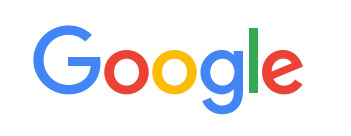
In a parallel universe, someone is currently searching for something on BackRub. That’s the name Google was initially called because of the backlinks it used to rank websites. Eventually, they settled on Googol, a mathematical term for a number with a million zeros in it. The final brand name of Google was the result of a spelling error by an employee.
In the end, it worked out brilliantly. The name is catchy, creative, and random. “Google” is also easier to spell, remember and pronounce than Googol too.
Whole Foods Market
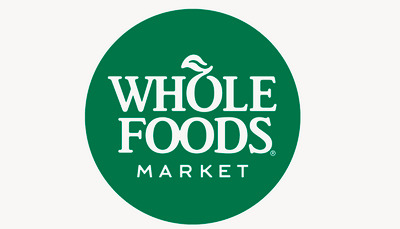
Whole Foods Market is the most descriptive name on this list, and that is part of the reason it’s so effective. It sends subtle signals that attract the brand’s target audience .
Choosing the word market rather than grocer or store was a stroke of genius in this regard. Market conjures up images of farmer’s markets and suggests the kind of well-off consumer Whole Foods’ targets.
Lego
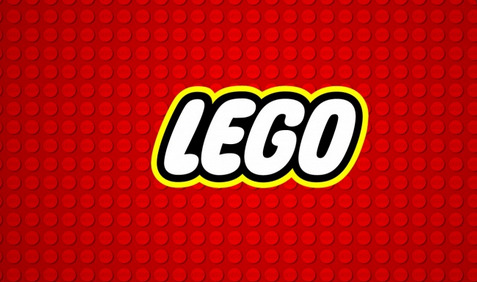
Lego is a simplified portmanteau of the Danish words leg godt meaning “play well.” Brilliantly, Lego also means “I put together,” so the name works on two levels.
Not only is the name descriptive for the native Danish market, but it also sounds great in other languages and doesn’t have any additional meanings.
Pepsi
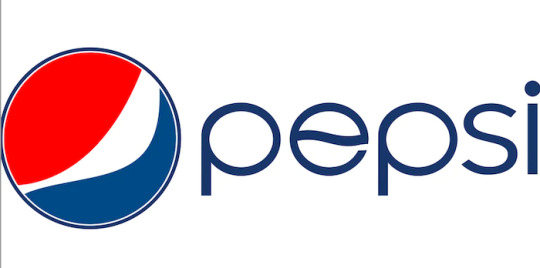
Caleb Davis Bradham, the inventor of Pepsi, originally called his concoction Brad’s Drink. Thankfully, he rebranded three years later . Pepsi is derived from the word dyspepsia, which means indigestion as Bradham believed the drink aided digestion.
Pepsi is way more creative and memorable than Brad’s Drink. Perhaps most importantly, the new name in no way infringed on Coca-Cola, created just a handful of years earlier.
Verizon
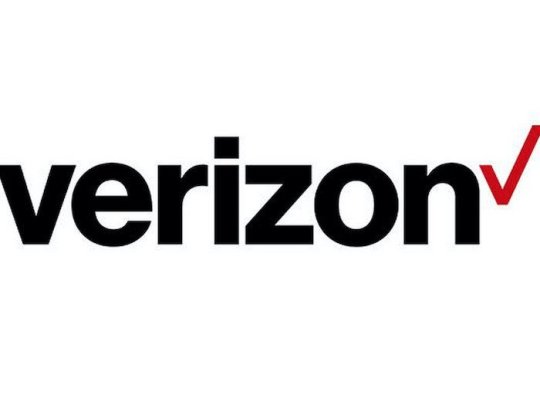
Verizon was formed in 2000 by the merger of Bell Atlantic and GTE. The business name combines the Latin word for truth, veritas, and horizon to signify the new company’s honest and forward-thinking nature. It’s creative, it has meaning, and it’s definitely memorable!
Use a Business Name Generator to Find Your Perfect Name
If you’re still stuck, help is at hand in the form of business name generators. There are plenty of software tools to help entrepreneurs quickly brainstorm business names.
Here are some to try:
Shopify
Shopify is famous for helping small business owners thrive. Coming up with a brand name is no different. Enter a keyword into the search bar, and Shopify will instantly spit out 100 business names you can create a store from today.
Freshbooks
Bookkeeping software Freshbooks has a pretty comprehensive business name generator that tailors recommendations based on your industry.
Start your search by choosing whether you operate in creative and marketing, legal or business services, trade, and home services, or IT. Enter a keyword, and Freshbooks will serve up three suggestions. You can ask for more suggestions or change your keyword to get a different batch of names.
Namelix
Namelix is a free AI-powered business name generator. Enter one or several keywords to get started, then filter suggestions by name, length, and style. There are hundreds of names to scroll through and a mix of basic and premium names. Premium recommendations come with a logo and domain name attached to make building a brand easier.
Conclusion
The right name can impact your SEO, branding, and customer perception . Would Google be where it is now if it was called Backrub? I don’t think so.
The business landscape is becoming more competitive every day, and a great business name can help your brand stand out.
Take inspiration from some of the great business names already out there, and use a business name generator if necessary. Just make sure your business name sets you up for long-term growth.
What are you going to call your new business? Let me know in the comments!

See How My Agency Can Drive Massive Amounts of Traffic to Your Website
SEO – unlock massive amounts of SEO traffic. See real results.
Content Marketing – our team creates epic content that will get shared, get links, and attract traffic.
Paid Media – effective paid strategies with clear ROI.
Book a Call

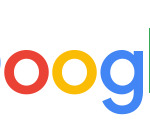


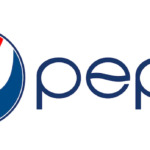


Go to Source Author: Neil Patel
This post How to Decide on a Business Name: Tools, Tips, and Strategies first appeared on WalrusVideo
0 notes
Text
How to Decide on a Business Name: Tools, Tips, and Strategies
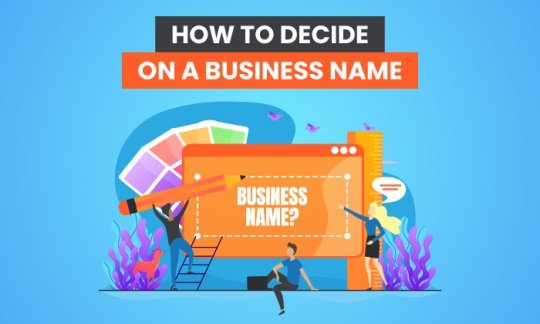
There are dozens of considerations entrepreneurs have to keep in mind when launching a new company, from the logo to the product to the packaging. The business name, however, may be the most important of all.
There are over 30 million small businesses in the U.S., according to the U.S Small Business Administration. That means you have to go above and beyond to stand out. The right name can help you do just that.
If you’re stuck on what to call your business or just want to make sure your chosen name ticks all the right boxes, I’m here to help.
In this article, I’ll cover my top tips for picking a winning business name, show some examples of what a great business name looks like, and even let you in on a sneaky way to get a load of business name ideas fast.
10 Tips to Pick a Business Name
Your business name can be almost anything you want it to be. As long as it’s legal and isn’t already in use, you’re good to go. However, there are several best practices most legal and marketing experts agree on.
I recommend the following tips to make sure your business gets off to the best start possible.
1. Ensure the Business Name Is Not Copyrighted or Trademarked
The first step in picking a business name is to make sure it doesn’t infringe any copyrights or trademarks. You can search copyright records and trademark records online.
I’d recommend going one step further and make sure it’s possible to trademark your brand name. You never know what the future will bring, after all. Even if you plan to keep your business small, I strongly recommend making sure it’s possible to copyright and trademark your brand.
Not doing so could land you in hot water years down the line. Just look at Apple. When Steve Jobs started the company, he chose Apple’s name because he was a fan of the Beatles (their recording label was called Apple Records).
There wasn’t any conflict initially because the two companies operated in completely separated industries. That was until Apple launched the iPod and the iTunes store, however. When they started operating in the same industry, Jobs quickly found himself saddled with a lawsuit.
2. Ensure the Business Name Isn’t Already Taken
This is a no-brainer, but it’s important to mention. Ideally, your business name will be unique and not used by any other business in existence. At the very least, it shouldn’t be used in any way by other companies operating in your industry.
A quick Google search can help you out here. If any results or domains come up that suggest another company is already using your name, either as a business name or as the name of one of their products, then it’s time to go back to the drawing board.
3. Ensure the Business Name Is Descriptive
You want customers to have an idea of what your business does just by hearing your name. You don’t have to know anything about TripAdvisor to know it is in the travel industry or that Burger King sells burgers.
Don’t be so descriptive that your name is downright boring, however. Seattle Plumber Inc. isn’t exactly inspiring and doesn’t separate your brand from any other plumbers in the city. First Call Plumbing is much catchier and easier to remember.
4. Make Sure the Matching Domain Name Is Available
Coming up with a brilliant business name is just the start. Before you can commit to it completely, make sure a matching domain name is available.
If it is, buy it .
If not, consider coming up with another business name. Having a domain name that is the exact match of your brand can be a real boost, particularly when it comes to SEO .
If your heart is set on a specific name, then all is not lost. There are several strategies you can use if your domain name is unavailable . Adding extra words or extending the name of your brand in your URL is becoming increasingly common.
5. Get Creative
This is your chance to embrace your inner copywriter and let your imagination and creativity run wild. Don’t be afraid to make something up. Almost three-quarters (72 percent) of the best brand names use made-up words or acronyms.
There are a couple of reasons for that. Firstly, existing words already mean something to many of your potential customers. You’ll need to decide whether this is a good or bad thing. Second, competitors may well be using the same or similar words.
6. Don’t Choose a Business Name That Is Hard to Pronounce or Spell
You’ll want your brand name to be accessible for everyone. That means no words that are impossible to pronounce when written down or easy to misspell.
While mixing up the letters or removing vowels from common words may look cool, it doesn’t help your customers find your business online. If customers can’t easily search for your business after hearing your name phonetically, there’s a good chance you’ll miss out on leads. You’ll also spend a lot of time spelling out your URL for customers.
7. Complete a Secretary of State Search
One way to make sure your business name is different from everyone else operating in your area is to complete a Secretary of State Search. Most states have a way to do this easily online, so it’s simply a matter of visiting your state’s website and typing in your proposed name.
If in doubt, ask your attorney for help. I’d also recommend searching in Delaware , even if you don’t live in that state. Delaware is a haven for company registrations, and so searching there helps ensure no businesses anywhere else in the country have similar names.
8. Get Feedback on the Business Name Before Making It Official
Test your business name out on your friends and family and get their feedback before committing to it. While you may think you’ve looked at your name from every angle, there’s a chance you’ve missed something.
If you’re not sure about a business name yet, give people a shortlist of your ideas and ask them to pick their favorite. If everyone agrees on the same one, you may just have found your new name.
9. Choose a Business Name That Isn’t Accidentally Offensive
Make sure your business name doesn’t mean something offensive in another language or as a slang term.
No self-respecting business owner would want to insult potential customers. Yet dozens of businesses do this without knowing it because of their business name.
Just because your business name isn’t offensive in your own country doesn’t mean it’s inoffensive everywhere. Any language or cultural issues can spell bad news for companies wanting to expand abroad.
Luckily, it’s never been easier to check whether your business name is offensive or not. Just head over to WordSafety.com and enter your proposed name. The site will quickly find whether there are any potential issues.
10. Keep It Simple and Easy to Remember
Long, complicated business names are bad news. The shorter, catchier, and more memorable your name is, the better. Try to keep it under 20 characters for the sake of your URL and avoid combining more than three different words.
Examples of Great Business Names
Tips and guidelines aren’t always enough to get the creative juices flowing. That’s why I’ve compiled five examples of great business names below, along with a description of what makes them so good.
Hopefully, these will give you a jumping-off point.
Google
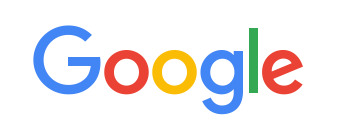
In a parallel universe, someone is currently searching for something on BackRub. That’s the name Google was initially called because of the backlinks it used to rank websites. Eventually, they settled on Googol, a mathematical term for a number with a million zeros in it. The final brand name of Google was the result of a spelling error by an employee.
In the end, it worked out brilliantly. The name is catchy, creative, and random. “Google” is also easier to spell, remember and pronounce than Googol too.
Whole Foods Market
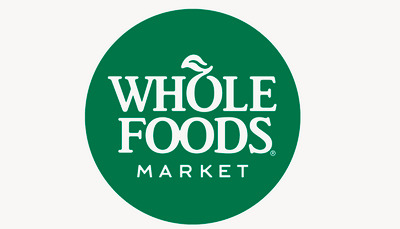
Whole Foods Market is the most descriptive name on this list, and that is part of the reason it’s so effective. It sends subtle signals that attract the brand’s target audience .
Choosing the word market rather than grocer or store was a stroke of genius in this regard. Market conjures up images of farmer’s markets and suggests the kind of well-off consumer Whole Foods’ targets.
Lego
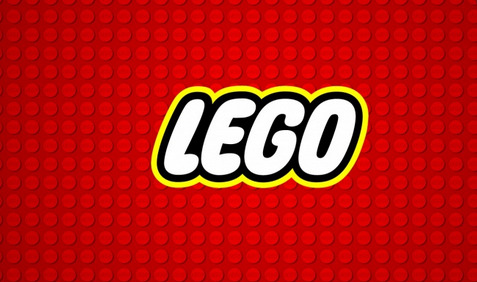
Lego is a simplified portmanteau of the Danish words leg godt meaning “play well.” Brilliantly, Lego also means “I put together,” so the name works on two levels.
Not only is the name descriptive for the native Danish market, but it also sounds great in other languages and doesn’t have any additional meanings.
Pepsi
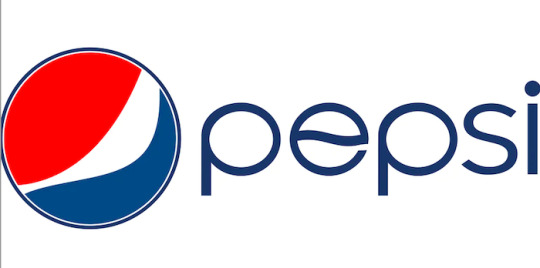
Caleb Davis Bradham, the inventor of Pepsi, originally called his concoction Brad’s Drink. Thankfully, he rebranded three years later . Pepsi is derived from the word dyspepsia, which means indigestion as Bradham believed the drink aided digestion.
Pepsi is way more creative and memorable than Brad’s Drink. Perhaps most importantly, the new name in no way infringed on Coca-Cola, created just a handful of years earlier.
Verizon
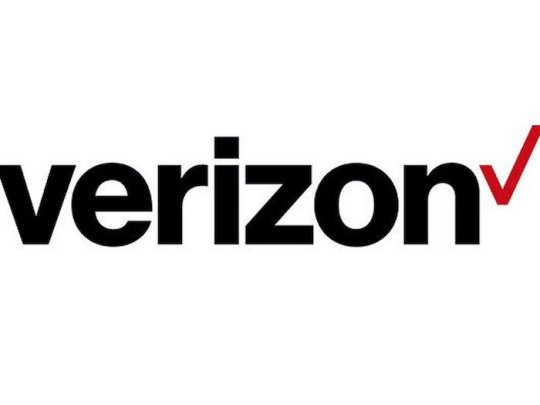
Verizon was formed in 2000 by the merger of Bell Atlantic and GTE. The business name combines the Latin word for truth, veritas, and horizon to signify the new company’s honest and forward-thinking nature. It’s creative, it has meaning, and it’s definitely memorable!
Use a Business Name Generator to Find Your Perfect Name
If you’re still stuck, help is at hand in the form of business name generators. There are plenty of software tools to help entrepreneurs quickly brainstorm business names.
Here are some to try:
Shopify
Shopify is famous for helping small business owners thrive. Coming up with a brand name is no different. Enter a keyword into the search bar, and Shopify will instantly spit out 100 business names you can create a store from today.
Freshbooks
Bookkeeping software Freshbooks has a pretty comprehensive business name generator that tailors recommendations based on your industry.
Start your search by choosing whether you operate in creative and marketing, legal or business services, trade, and home services, or IT. Enter a keyword, and Freshbooks will serve up three suggestions. You can ask for more suggestions or change your keyword to get a different batch of names.
Namelix
Namelix is a free AI-powered business name generator. Enter one or several keywords to get started, then filter suggestions by name, length, and style. There are hundreds of names to scroll through and a mix of basic and premium names. Premium recommendations come with a logo and domain name attached to make building a brand easier.
Conclusion
The right name can impact your SEO, branding, and customer perception . Would Google be where it is now if it was called Backrub? I don’t think so.
The business landscape is becoming more competitive every day, and a great business name can help your brand stand out.
Take inspiration from some of the great business names already out there, and use a business name generator if necessary. Just make sure your business name sets you up for long-term growth.
What are you going to call your new business? Let me know in the comments!

See How My Agency Can Drive Massive Amounts of Traffic to Your Website
SEO – unlock massive amounts of SEO traffic. See real results.
Content Marketing – our team creates epic content that will get shared, get links, and attract traffic.
Paid Media – effective paid strategies with clear ROI.
Book a Call

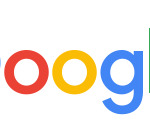


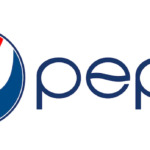


Go to Source Author: Neil Patel
This post How to Decide on a Business Name: Tools, Tips, and Strategies first appeared on WalrusVideo
0 notes
Text
How to Decide on a Business Name: Tools, Tips, and Strategies
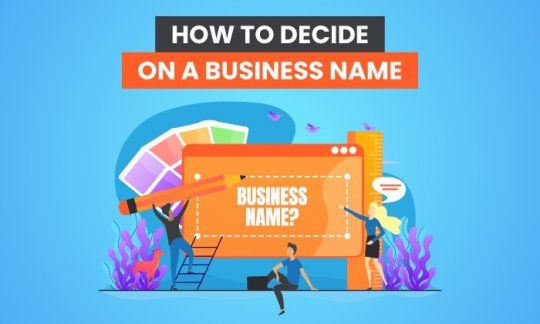
There are dozens of considerations entrepreneurs have to keep in mind when launching a new company, from the logo to the product to the packaging. The business name, however, may be the most important of all.
There are over 30 million small businesses in the U.S., according to the U.S Small Business Administration. That means you have to go above and beyond to stand out. The right name can help you do just that.
If you’re stuck on what to call your business or just want to make sure your chosen name ticks all the right boxes, I’m here to help.
In this article, I’ll cover my top tips for picking a winning business name, show some examples of what a great business name looks like, and even let you in on a sneaky way to get a load of business name ideas fast.
10 Tips to Pick a Business Name
Your business name can be almost anything you want it to be. As long as it’s legal and isn’t already in use, you’re good to go. However, there are several best practices most legal and marketing experts agree on.
I recommend the following tips to make sure your business gets off to the best start possible.
1. Ensure the Business Name Is Not Copyrighted or Trademarked
The first step in picking a business name is to make sure it doesn’t infringe any copyrights or trademarks. You can search copyright records and trademark records online.
I’d recommend going one step further and make sure it’s possible to trademark your brand name. You never know what the future will bring, after all. Even if you plan to keep your business small, I strongly recommend making sure it’s possible to copyright and trademark your brand.
Not doing so could land you in hot water years down the line. Just look at Apple. When Steve Jobs started the company, he chose Apple’s name because he was a fan of the Beatles (their recording label was called Apple Records).
There wasn’t any conflict initially because the two companies operated in completely separated industries. That was until Apple launched the iPod and the iTunes store, however. When they started operating in the same industry, Jobs quickly found himself saddled with a lawsuit.
2. Ensure the Business Name Isn’t Already Taken
This is a no-brainer, but it’s important to mention. Ideally, your business name will be unique and not used by any other business in existence. At the very least, it shouldn’t be used in any way by other companies operating in your industry.
A quick Google search can help you out here. If any results or domains come up that suggest another company is already using your name, either as a business name or as the name of one of their products, then it’s time to go back to the drawing board.
3. Ensure the Business Name Is Descriptive
You want customers to have an idea of what your business does just by hearing your name. You don’t have to know anything about TripAdvisor to know it is in the travel industry or that Burger King sells burgers.
Don’t be so descriptive that your name is downright boring, however. Seattle Plumber Inc. isn’t exactly inspiring and doesn’t separate your brand from any other plumbers in the city. First Call Plumbing is much catchier and easier to remember.
4. Make Sure the Matching Domain Name Is Available
Coming up with a brilliant business name is just the start. Before you can commit to it completely, make sure a matching domain name is available.
If it is, buy it .
If not, consider coming up with another business name. Having a domain name that is the exact match of your brand can be a real boost, particularly when it comes to SEO .
If your heart is set on a specific name, then all is not lost. There are several strategies you can use if your domain name is unavailable . Adding extra words or extending the name of your brand in your URL is becoming increasingly common.
5. Get Creative
This is your chance to embrace your inner copywriter and let your imagination and creativity run wild. Don’t be afraid to make something up. Almost three-quarters (72 percent) of the best brand names use made-up words or acronyms.
There are a couple of reasons for that. Firstly, existing words already mean something to many of your potential customers. You’ll need to decide whether this is a good or bad thing. Second, competitors may well be using the same or similar words.
6. Don’t Choose a Business Name That Is Hard to Pronounce or Spell
You’ll want your brand name to be accessible for everyone. That means no words that are impossible to pronounce when written down or easy to misspell.
While mixing up the letters or removing vowels from common words may look cool, it doesn’t help your customers find your business online. If customers can’t easily search for your business after hearing your name phonetically, there’s a good chance you’ll miss out on leads. You’ll also spend a lot of time spelling out your URL for customers.
7. Complete a Secretary of State Search
One way to make sure your business name is different from everyone else operating in your area is to complete a Secretary of State Search. Most states have a way to do this easily online, so it’s simply a matter of visiting your state’s website and typing in your proposed name.
If in doubt, ask your attorney for help. I’d also recommend searching in Delaware , even if you don’t live in that state. Delaware is a haven for company registrations, and so searching there helps ensure no businesses anywhere else in the country have similar names.
8. Get Feedback on the Business Name Before Making It Official
Test your business name out on your friends and family and get their feedback before committing to it. While you may think you’ve looked at your name from every angle, there’s a chance you’ve missed something.
If you’re not sure about a business name yet, give people a shortlist of your ideas and ask them to pick their favorite. If everyone agrees on the same one, you may just have found your new name.
9. Choose a Business Name That Isn’t Accidentally Offensive
Make sure your business name doesn’t mean something offensive in another language or as a slang term.
No self-respecting business owner would want to insult potential customers. Yet dozens of businesses do this without knowing it because of their business name.
Just because your business name isn’t offensive in your own country doesn’t mean it’s inoffensive everywhere. Any language or cultural issues can spell bad news for companies wanting to expand abroad.
Luckily, it’s never been easier to check whether your business name is offensive or not. Just head over to WordSafety.com and enter your proposed name. The site will quickly find whether there are any potential issues.
10. Keep It Simple and Easy to Remember
Long, complicated business names are bad news. The shorter, catchier, and more memorable your name is, the better. Try to keep it under 20 characters for the sake of your URL and avoid combining more than three different words.
Examples of Great Business Names
Tips and guidelines aren’t always enough to get the creative juices flowing. That’s why I’ve compiled five examples of great business names below, along with a description of what makes them so good.
Hopefully, these will give you a jumping-off point.
Google
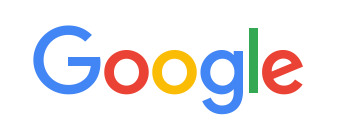
In a parallel universe, someone is currently searching for something on BackRub. That’s the name Google was initially called because of the backlinks it used to rank websites. Eventually, they settled on Googol, a mathematical term for a number with a million zeros in it. The final brand name of Google was the result of a spelling error by an employee.
In the end, it worked out brilliantly. The name is catchy, creative, and random. “Google” is also easier to spell, remember and pronounce than Googol too.
Whole Foods Market
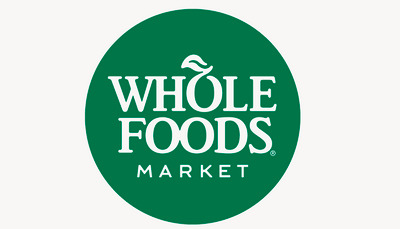
Whole Foods Market is the most descriptive name on this list, and that is part of the reason it’s so effective. It sends subtle signals that attract the brand’s target audience .
Choosing the word market rather than grocer or store was a stroke of genius in this regard. Market conjures up images of farmer’s markets and suggests the kind of well-off consumer Whole Foods’ targets.
Lego
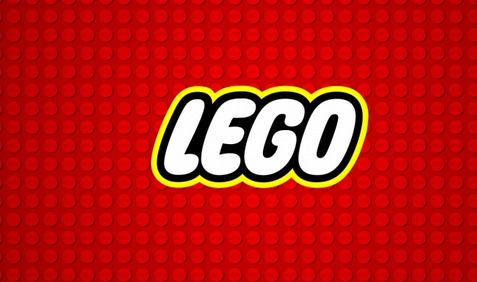
Lego is a simplified portmanteau of the Danish words leg godt meaning “play well.” Brilliantly, Lego also means “I put together,” so the name works on two levels.
Not only is the name descriptive for the native Danish market, but it also sounds great in other languages and doesn’t have any additional meanings.
Pepsi
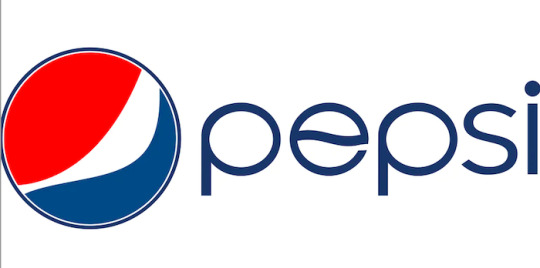
Caleb Davis Bradham, the inventor of Pepsi, originally called his concoction Brad’s Drink. Thankfully, he rebranded three years later . Pepsi is derived from the word dyspepsia, which means indigestion as Bradham believed the drink aided digestion.
Pepsi is way more creative and memorable than Brad’s Drink. Perhaps most importantly, the new name in no way infringed on Coca-Cola, created just a handful of years earlier.
Verizon
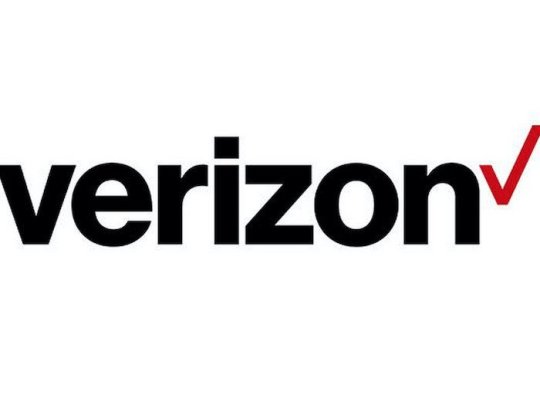
Verizon was formed in 2000 by the merger of Bell Atlantic and GTE. The business name combines the Latin word for truth, veritas, and horizon to signify the new company’s honest and forward-thinking nature. It’s creative, it has meaning, and it’s definitely memorable!
Use a Business Name Generator to Find Your Perfect Name
If you’re still stuck, help is at hand in the form of business name generators. There are plenty of software tools to help entrepreneurs quickly brainstorm business names.
Here are some to try:
Shopify
Shopify is famous for helping small business owners thrive. Coming up with a brand name is no different. Enter a keyword into the search bar, and Shopify will instantly spit out 100 business names you can create a store from today.
Freshbooks
Bookkeeping software Freshbooks has a pretty comprehensive business name generator that tailors recommendations based on your industry.
Start your search by choosing whether you operate in creative and marketing, legal or business services, trade, and home services, or IT. Enter a keyword, and Freshbooks will serve up three suggestions. You can ask for more suggestions or change your keyword to get a different batch of names.
Namelix
Namelix is a free AI-powered business name generator. Enter one or several keywords to get started, then filter suggestions by name, length, and style. There are hundreds of names to scroll through and a mix of basic and premium names. Premium recommendations come with a logo and domain name attached to make building a brand easier.
Conclusion
The right name can impact your SEO, branding, and customer perception . Would Google be where it is now if it was called Backrub? I don’t think so.
The business landscape is becoming more competitive every day, and a great business name can help your brand stand out.
Take inspiration from some of the great business names already out there, and use a business name generator if necessary. Just make sure your business name sets you up for long-term growth.
What are you going to call your new business? Let me know in the comments!

See How My Agency Can Drive Massive Amounts of Traffic to Your Website
SEO – unlock massive amounts of SEO traffic. See real results.
Content Marketing – our team creates epic content that will get shared, get links, and attract traffic.
Paid Media – effective paid strategies with clear ROI.
Book a Call

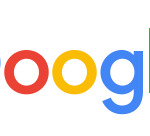


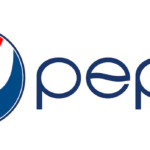


Go to Source Author: Neil Patel
This post How to Decide on a Business Name: Tools, Tips, and Strategies first appeared on WalrusVideo
0 notes
Text
How to Decide on a Business Name: Tools, Tips, and Strategies
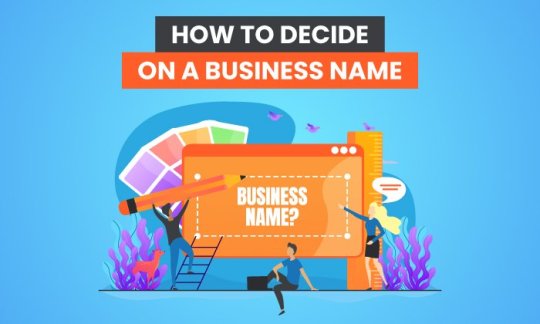
There are dozens of considerations entrepreneurs have to keep in mind when launching a new company, from the logo to the product to the packaging. The business name, however, may be the most important of all.
There are over 30 million small businesses in the U.S., according to the U.S Small Business Administration. That means you have to go above and beyond to stand out. The right name can help you do just that.
If you’re stuck on what to call your business or just want to make sure your chosen name ticks all the right boxes, I’m here to help.
In this article, I’ll cover my top tips for picking a winning business name, show some examples of what a great business name looks like, and even let you in on a sneaky way to get a load of business name ideas fast.
10 Tips to Pick a Business Name
Your business name can be almost anything you want it to be. As long as it’s legal and isn’t already in use, you’re good to go. However, there are several best practices most legal and marketing experts agree on.
I recommend the following tips to make sure your business gets off to the best start possible.
1. Ensure the Business Name Is Not Copyrighted or Trademarked
The first step in picking a business name is to make sure it doesn’t infringe any copyrights or trademarks. You can search copyright records and trademark records online.
I’d recommend going one step further and make sure it’s possible to trademark your brand name. You never know what the future will bring, after all. Even if you plan to keep your business small, I strongly recommend making sure it’s possible to copyright and trademark your brand.
Not doing so could land you in hot water years down the line. Just look at Apple. When Steve Jobs started the company, he chose Apple’s name because he was a fan of the Beatles (their recording label was called Apple Records).
There wasn’t any conflict initially because the two companies operated in completely separated industries. That was until Apple launched the iPod and the iTunes store, however. When they started operating in the same industry, Jobs quickly found himself saddled with a lawsuit.
2. Ensure the Business Name Isn’t Already Taken
This is a no-brainer, but it’s important to mention. Ideally, your business name will be unique and not used by any other business in existence. At the very least, it shouldn’t be used in any way by other companies operating in your industry.
A quick Google search can help you out here. If any results or domains come up that suggest another company is already using your name, either as a business name or as the name of one of their products, then it’s time to go back to the drawing board.
3. Ensure the Business Name Is Descriptive
You want customers to have an idea of what your business does just by hearing your name. You don’t have to know anything about TripAdvisor to know it is in the travel industry or that Burger King sells burgers.
Don’t be so descriptive that your name is downright boring, however. Seattle Plumber Inc. isn’t exactly inspiring and doesn’t separate your brand from any other plumbers in the city. First Call Plumbing is much catchier and easier to remember.
4. Make Sure the Matching Domain Name Is Available
Coming up with a brilliant business name is just the start. Before you can commit to it completely, make sure a matching domain name is available.
If it is, buy it .
If not, consider coming up with another business name. Having a domain name that is the exact match of your brand can be a real boost, particularly when it comes to SEO .
If your heart is set on a specific name, then all is not lost. There are several strategies you can use if your domain name is unavailable . Adding extra words or extending the name of your brand in your URL is becoming increasingly common.
5. Get Creative
This is your chance to embrace your inner copywriter and let your imagination and creativity run wild. Don’t be afraid to make something up. Almost three-quarters (72 percent) of the best brand names use made-up words or acronyms.
There are a couple of reasons for that. Firstly, existing words already mean something to many of your potential customers. You’ll need to decide whether this is a good or bad thing. Second, competitors may well be using the same or similar words.
6. Don’t Choose a Business Name That Is Hard to Pronounce or Spell
You’ll want your brand name to be accessible for everyone. That means no words that are impossible to pronounce when written down or easy to misspell.
While mixing up the letters or removing vowels from common words may look cool, it doesn’t help your customers find your business online. If customers can’t easily search for your business after hearing your name phonetically, there’s a good chance you’ll miss out on leads. You’ll also spend a lot of time spelling out your URL for customers.
7. Complete a Secretary of State Search
One way to make sure your business name is different from everyone else operating in your area is to complete a Secretary of State Search. Most states have a way to do this easily online, so it’s simply a matter of visiting your state’s website and typing in your proposed name.
If in doubt, ask your attorney for help. I’d also recommend searching in Delaware , even if you don’t live in that state. Delaware is a haven for company registrations, and so searching there helps ensure no businesses anywhere else in the country have similar names.
8. Get Feedback on the Business Name Before Making It Official
Test your business name out on your friends and family and get their feedback before committing to it. While you may think you’ve looked at your name from every angle, there’s a chance you’ve missed something.
If you’re not sure about a business name yet, give people a shortlist of your ideas and ask them to pick their favorite. If everyone agrees on the same one, you may just have found your new name.
9. Choose a Business Name That Isn’t Accidentally Offensive
Make sure your business name doesn’t mean something offensive in another language or as a slang term.
No self-respecting business owner would want to insult potential customers. Yet dozens of businesses do this without knowing it because of their business name.
Just because your business name isn’t offensive in your own country doesn’t mean it’s inoffensive everywhere. Any language or cultural issues can spell bad news for companies wanting to expand abroad.
Luckily, it’s never been easier to check whether your business name is offensive or not. Just head over to WordSafety.com and enter your proposed name. The site will quickly find whether there are any potential issues.
10. Keep It Simple and Easy to Remember
Long, complicated business names are bad news. The shorter, catchier, and more memorable your name is, the better. Try to keep it under 20 characters for the sake of your URL and avoid combining more than three different words.
Examples of Great Business Names
Tips and guidelines aren’t always enough to get the creative juices flowing. That’s why I’ve compiled five examples of great business names below, along with a description of what makes them so good.
Hopefully, these will give you a jumping-off point.
Google
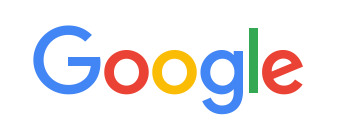
In a parallel universe, someone is currently searching for something on BackRub. That’s the name Google was initially called because of the backlinks it used to rank websites. Eventually, they settled on Googol, a mathematical term for a number with a million zeros in it. The final brand name of Google was the result of a spelling error by an employee.
In the end, it worked out brilliantly. The name is catchy, creative, and random. “Google” is also easier to spell, remember and pronounce than Googol too.
Whole Foods Market

Whole Foods Market is the most descriptive name on this list, and that is part of the reason it’s so effective. It sends subtle signals that attract the brand’s target audience .
Choosing the word market rather than grocer or store was a stroke of genius in this regard. Market conjures up images of farmer’s markets and suggests the kind of well-off consumer Whole Foods’ targets.
Lego
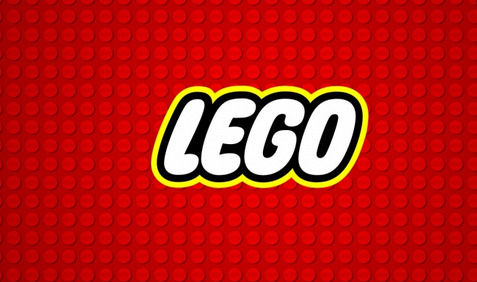
Lego is a simplified portmanteau of the Danish words leg godt meaning “play well.” Brilliantly, Lego also means “I put together,” so the name works on two levels.
Not only is the name descriptive for the native Danish market, but it also sounds great in other languages and doesn’t have any additional meanings.
Pepsi
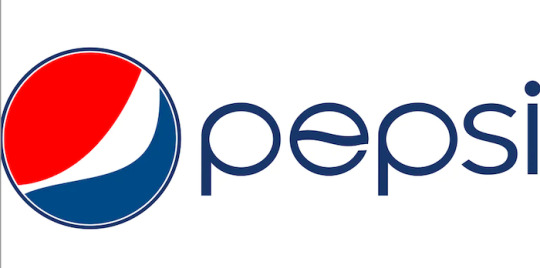
Caleb Davis Bradham, the inventor of Pepsi, originally called his concoction Brad’s Drink. Thankfully, he rebranded three years later . Pepsi is derived from the word dyspepsia, which means indigestion as Bradham believed the drink aided digestion.
Pepsi is way more creative and memorable than Brad’s Drink. Perhaps most importantly, the new name in no way infringed on Coca-Cola, created just a handful of years earlier.
Verizon
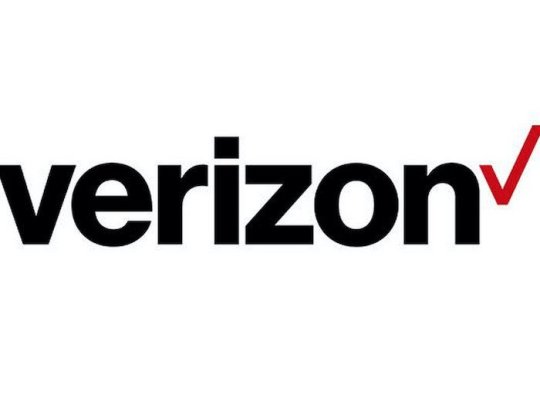
Verizon was formed in 2000 by the merger of Bell Atlantic and GTE. The business name combines the Latin word for truth, veritas, and horizon to signify the new company’s honest and forward-thinking nature. It’s creative, it has meaning, and it’s definitely memorable!
Use a Business Name Generator to Find Your Perfect Name
If you’re still stuck, help is at hand in the form of business name generators. There are plenty of software tools to help entrepreneurs quickly brainstorm business names.
Here are some to try:
Shopify
Shopify is famous for helping small business owners thrive. Coming up with a brand name is no different. Enter a keyword into the search bar, and Shopify will instantly spit out 100 business names you can create a store from today.
Freshbooks
Bookkeeping software Freshbooks has a pretty comprehensive business name generator that tailors recommendations based on your industry.
Start your search by choosing whether you operate in creative and marketing, legal or business services, trade, and home services, or IT. Enter a keyword, and Freshbooks will serve up three suggestions. You can ask for more suggestions or change your keyword to get a different batch of names.
Namelix
Namelix is a free AI-powered business name generator. Enter one or several keywords to get started, then filter suggestions by name, length, and style. There are hundreds of names to scroll through and a mix of basic and premium names. Premium recommendations come with a logo and domain name attached to make building a brand easier.
Conclusion
The right name can impact your SEO, branding, and customer perception . Would Google be where it is now if it was called Backrub? I don’t think so.
The business landscape is becoming more competitive every day, and a great business name can help your brand stand out.
Take inspiration from some of the great business names already out there, and use a business name generator if necessary. Just make sure your business name sets you up for long-term growth.
What are you going to call your new business? Let me know in the comments!

See How My Agency Can Drive Massive Amounts of Traffic to Your Website
SEO – unlock massive amounts of SEO traffic. See real results.
Content Marketing – our team creates epic content that will get shared, get links, and attract traffic.
Paid Media – effective paid strategies with clear ROI.
Book a Call

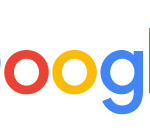


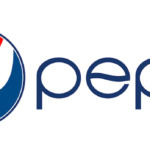


Go to Source Author: Neil Patel
This post How to Decide on a Business Name: Tools, Tips, and Strategies first appeared on WalrusVideo
0 notes